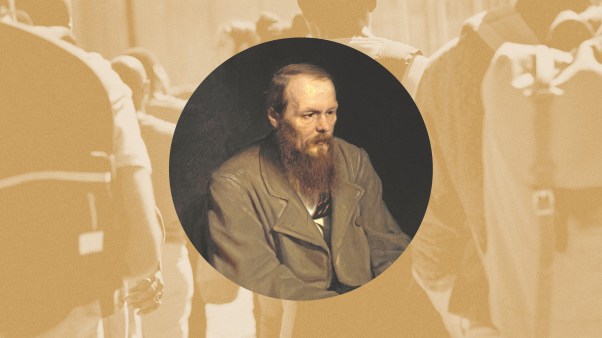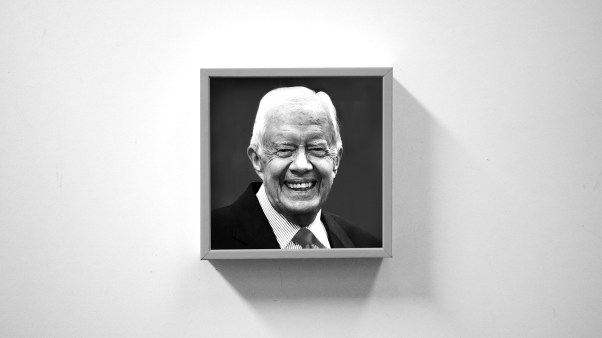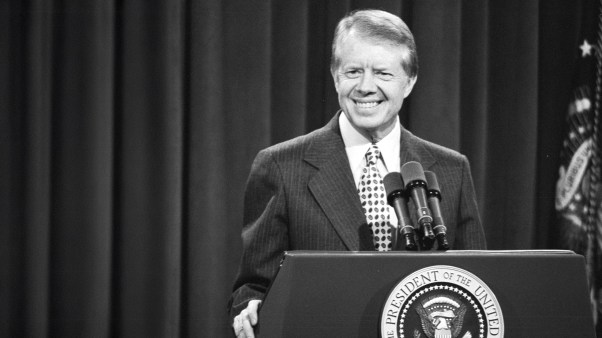Some of the ancient history underneath Jerusalem is easily accessible.
Pilgrims and tourists can get their feet wet in the Siloam Tunnel, carved by order of King Hezekiah to bring water inside the walls of the city (2 Kings 20:20). The Western Wall Tunnel, excavated in the late 20th century, traces a first-century street from the Western Wall to the path that Jesus is traditionally thought to have walked to his crucifixion. Archaeologists are currently excavating another street that pilgrims used in Jesus’ day to go from the Pool of Siloam (John 9:7) up to the Temple Mount.
But other parts of the city’s 5,000-year history are harder to get to—if not impossible. Practical and political problems prohibit access, even for the experts trying to do research.
Now, however, physicists have come up with a new way to dig without digging: muography.
Muons are tiny subatomic particles that are everywhere on earth, according to physicists. They are created when cosmic rays smash into the Earth’s atmosphere, showering the surface of the planet with about 10,000 of the particles per square meter.
In recent years, scientists have figured out how to use muon detectors to map inaccessible subterranean cavities, creating images of rooms inside Egyptian pyramids and magma chambers deep in volcanoes. Now they’re using them to map the streets Jesus once walked in ancient Jerusalem.
Last year, a team of Tel Aviv University archaeologists and physicists shoehorned an unwieldy homemade muon detector—you can’t buy one from a store—into a rocky cavern close to the Gihon Spring in the Kidron Valley. They placed another detector behind a rocky bulwark called the Stepped Stone Structure. Then they pointed them both toward the Temple Mount and turned them on.
Here’s how they work: Muons have about 10,000 times the energy of a typical x-ray. They can easily pass through rock and earth—and anything less dense, like plants and people—but the denser the material they pass through, the quicker they lose their energy.
When muons hit the detectors with different energy levels, an image can be created of the density of the matter through which they passed. Empty spaces are easily distinguished. And archaeologists can “see” underground.
Eventually the Tel Aviv team hopes to have 10 or more detectors near the Temple Mount, the contested holy site where traditional digging would create an impossible uproar.
“Jerusalem would seem to me to be as good a place as you could ever have for exploring this new technology,” said John Monson, professor of Old Testament and Semitic languages at Trinity Evangelical Divinity School.
Monson grew up in Jerusalem, where his father taught at the Institute for Holyland Studies (now Jerusalem University College).
He can tell hundreds of stories about the biblical sites he visited as a child and later as a student and professor. He loves the history of archaeology and the evolution of archaeological methods. In many cases, Monson said, new discoveries have come through the development of new tools, which open up new ways of exploring.
“When you look at Jerusalem, exploration has been pushed forward by whatever technology has been available across the generations,” he told CT. “This looks to me to be a very, very promising tool.”
At the same time, Monson acknowledges that every technology has downsides. And there are always limitations.
That’s a caution echoed by Jodi Magness, author of the new book Jerusalem Through the Ages.
Magness, professor of early Judaism at the University of North Carolina at Chapel Hill, says any kind of new technology will yield new information. But it may not be very much or very useful.
Archaeologists are already aware they won’t work in every situation. Muon detectors need to be placed beneath the areas they are imaging, which limits where they can be used. Also, each detector costs about $100,000 to build.
The new tool has other obvious limitations. Archaeologists may be able to see an image of a cavern, but the muon detector “won’t tell you what it is, or what its date is,” Magness said. “It can be used in conjunction with other methods, but it’s not going to be a substitute for them.”
It still may, however, lead to significant new discoveries. Israeli archaeologists have been peeling back the layers of history underneath what was once the Givati Parking Lot, just outside the Temple Mount area.
Their digging has discovered remains of palaces and other significant buildings, identified the location of the mysterious Acra fortress of the Maccabees, and revealed a previously unknown moat that defended the city, perhaps as far back as the time of David.
The opportunity to excavate such a comparatively large space in a city like Jerusalem is rare.
“Usually you’re just excavating one little part and trying to figure out what the rest is,” Magness said. “When you get the opportunity to excavate in a large area like this, you’re able to get a much bigger picture—a broader and more accurate picture.”
The muon detectors, as they’re currently deployed, are pointed toward an area next to the Givati excavation. Perhaps they will help answer some of the questions raised by the archaeologists digging in the parking lot. Perhaps they will show the length of the newly discovered moat.
Or perhaps archaeologists will make altogether new discoveries with muon detectors.
Wherever the technology leads, though, scholars are glad to have more options. It’s good, too, to have ways to see under the surface of the city that are less invasive than traditional means of uncovering the past.
“What we are doing in archaeology is essentially destructive when we dig,” Monson said. “Maybe muography offers … something that’s not destructive.”
Gordon Govier writes about biblical archaeology for Christianity Today, hosts the archaeology radio program The Book and The Spade, and is the editor of Artifax.











